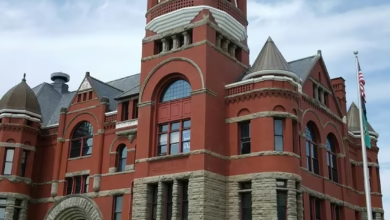Secrets of the Venetian Lagoon: A Hidden World Beyond the Canals of Venice

Introduction
Think Venice is just about romantic gondola rides and crumbling Renaissance palaces? Think again. Beyond the picture-perfect canals lies a sprawling watery universe known as the Venetian Lagoon a patchwork of islands, marshlands, and secrets the average tourist never sees. It’s the kind of place where flamingos strut through brackish shallows, fishermen pull up nets brimming with local delicacies, and abandoned monasteries hide centuries-old ghost stories.
In this deep dive, we’re peeling back the layers of this fascinating ecosystem to reveal why the Venetian Lagoon is much more than a pretty backdrop it’s the beating, briny heart of Venetian life. So, pack your curiosity (and maybe some waterproof shoes) and let’s sail into the unknown.
What Exactly Is the Venetian Lagoon?
At first glance, it might look like just another coastal area, but don’t be fooled. The Venetian Lagoon is an intricate maze of water and land a 212-square-mile stretch of shallow saltwater separated from the Adriatic Sea by a series of narrow barrier islands. It’s where Venice was born, and it continues to be the lifeblood of the city.
Key Features of the Lagoon:
-
Over 100 islands, both inhabited and abandoned.
-
Salt marshes, mudflats, and channels shaped by tides and time.
-
Three main inlets (Lido, Malamocco, and Chioggia) connecting to the Adriatic Sea.
-
A delicate balance between natural and human-made systems.
This lagoon is as much a cultural artifact as it is a natural wonder. In fact, it’s one of the last remaining large wetlands in the Mediterranean. And despite centuries of human interference, it still clings to a kind of wild, untamed beauty.
Venice Wouldn’t Exist Without It
Ever wonder how a city like Venice, made of stone and art, ended up plopped in the middle of a lagoon? Well, you can thank the Venetian Lagoon for that. Without it, Venice wouldn’t have the protection, resources, or mystique that made it the Queen of the Adriatic.
Back in the day like 5th-century-back people fled mainland invasions and sought safety on the marshy islets of the lagoon. Over time, they drove wooden piles into the muddy bottom, built platforms, and voilà—Venice rose like a phoenix from the mud.
But here’s the kicker: Venice’s rise also spelled trouble for the lagoon. Deforestation, canal building, and industrial waste nearly choked the whole ecosystem. Luckily, efforts in recent decades have started to reverse the damage (more on that later).
Hidden Gems of the Venetian Lagoon
You’ve probably heard of Murano (hello, glass!) and Burano (those rainbow-colored houses are social media gold), but the lagoon is sprinkled with other, lesser-known islands that feel like entire worlds unto themselves.
1. Torcello: Where Time Forgot
This near-abandoned island was once more populous than Venice itself. Today, it’s a sleepy haven of ruins, reeds, and one hauntingly beautiful cathedral.
Don’t Miss: Climbing the bell tower for panoramic views across the lagoon.
2. San Francesco del Deserto: Monastic Mystique
Accessible only by private boat, this island hosts a still-functioning Franciscan monastery. The peace here is almost tangible—it’s like the world hits mute the second you step off the boat.
3. Lazzaretto Nuovo: Venice’s Plague Island
A 15th-century quarantine station turned open-air museum, it offers a sobering yet fascinating glimpse into how Venice battled the Black Death.
4. Pellestrina: The Locals’ Lagoon
A narrow strip of land where Venetian dialect flows freely, fishermen mend nets in the sun, and the seafood is to die for.
Pro tip: Rent a bike and ride its entire 11 km length. Just bring sunscreen—shade is a rare luxury here.
Life in the Lagoon: More Than Meets the Eye
Contrary to popular belief, the Venetian Lagoon isn’t just a postcard-perfect destination it’s a living, breathing environment teeming with stories and struggles.
Flora and Fauna
You might not expect a rich natural habitat in a place known for its man-made marvels, but the lagoon surprises. Think:
-
Pink flamingos wading through marshes.
-
Eels and sea bass darting through underwater meadows.
-
Rare plants like glasswort and sea lavender thriving in the salty flats.
The Fishermen’s Legacy
Generations of fishermen have learned to work with the tides, not against them. Their traditional fishing structures casoni and valle da pesca dot the shallows, creating a mosaic of wooden huts and net-covered poles.
Some even say that the lagoon “speaks” to the fishermen. A shift in water color, a sudden wind—these are the signs they use to read the mood of the sea.
Challenges and Conservation
Of course, it’s not all sunshine and spritzes. The Venetian Lagoon is facing some serious challenges, and if action isn’t taken, this watery world could dry up literally and figuratively.
The Big Bad List:
-
Rising sea levels: Climate change is pushing saltwater into freshwater marshes, disrupting ecosystems.
-
Over-tourism: Cruise ships and crowds bring pollution and stress to fragile zones.
-
Erosion: Natural sediment flows have been interrupted by man-made channels.
-
Industrial waste: Pollution from the mainland still poses a threat.
Enter: MOSE Project
You’ve probably heard about Venice’s massive flood defense system, MOSE. It’s a series of underwater gates designed to keep rising tides at bay. While controversial and plagued by delays, it’s one of the biggest engineering efforts ever attempted in a lagoon setting.
But protecting the Venetian Lagoon requires more than hardware it needs heart. Ongoing clean-up projects, eco-tourism initiatives, and community-led education are now playing vital roles.
Fun & Quirky Lagoon Traditions
Venetians love a good celebration, and the lagoon has inspired more than a few unique customs.
Festa del Redentore
Every July, the city builds a temporary floating bridge from Zattere to Giudecca. Locals decorate their boats, grill seafood, and watch fireworks light up the lagoon sky. It’s gratitude, joy, and local pride rolled into one colorful night.
Vogalonga
No motors allowed! This non-competitive boat race draws rowers from around the world. It’s a love letter to traditional rowing and a protest against motorboat damage to the lagoon’s fragile foundations.
FAQs About the Venetian Lagoon
Q: Can I visit the lagoon on my own?
Absolutely! You can hop on a vaporetto (public water bus) or book a private tour. Many islands are accessible, but for the real hidden gems, a local guide helps.
Q: Is it safe to swim in the lagoon?
In some areas, yes. Locals often swim near Pellestrina or Sant’Erasmo, but avoid murky, busy, or industrial zones.
Q: What’s the best time to explore the lagoon?
Late spring or early fall fewer crowds, pleasant temps, and vivid sunsets over the water.
Q: Are there any wildlife sanctuaries in the lagoon?
Yes! The northern lagoon is home to several protected areas. Birdwatchers, bring binoculars you’ll thank us later.
Conclusion: Fall in Love with the Lagoon
So, there you have it. The Venetian Lagoon is far more than a moat around a crumbling city—it’s an intricate, ancient, and evolving world. It’s where nature whispers stories of survival, and locals live out rhythms set by the tide.
Whether you’re chasing flamingos, devouring lagoon-fresh clams, or drifting past the ghosts of a forgotten island, one thing’s for sure: once you’ve dipped your toe in the Venetian Lagoon, it’ll tug at your soul forever.
Next time you’re in Venice, don’t just stop at St. Mark’s Square. Venture out. Get lost. Let the lagoon show you its secrets.
Because trust us she’s got plenty to tell.



